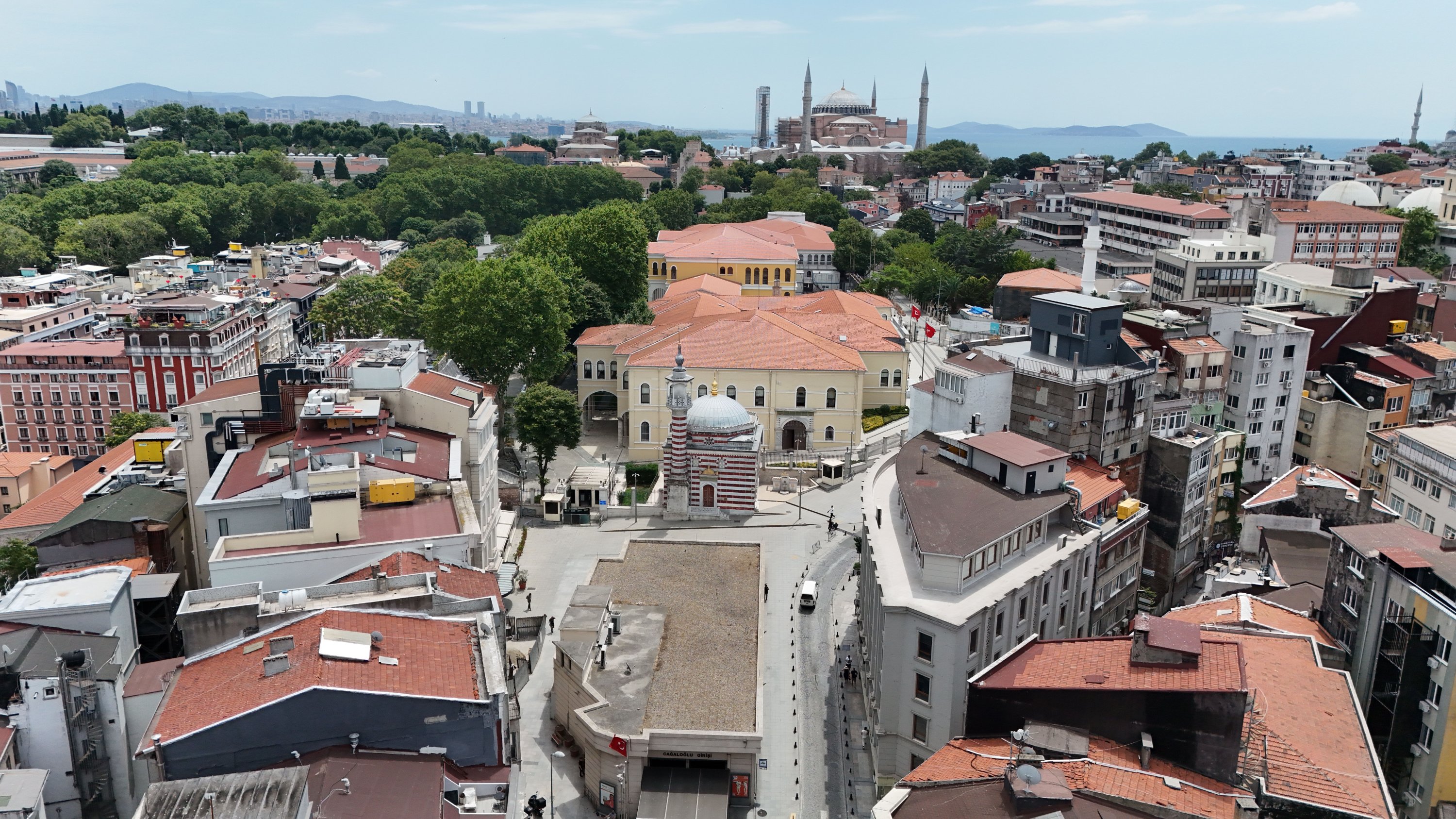In Istanbul, restoration and reconstruction efforts for the Hariciye Nezareti (Ministry of Foreign Affairs in Ottoman Turkish) and Şura-ı Devlet (Council of State in Ottoman Turkish) buildings, which began in 2022 and 2020 respectively, have reached 50% completion. These historical buildings are expected to be completed with their new appearances by 2025. The Istanbul Governor's office houses three inscriptions by Ottoman calligrapher Yeserizade Mustafa Izzet Efendi, located in different areas and noted for their splendor.
Researcher Oktay Türkoğlu provided insights into the inscriptions: “The first one of the inscriptions is directly opposite Gülhane Park, above a distinctive wavy cornice. This door is currently under restoration. The governor's office had been affected by fires and rebuilt, losing its original characteristics.

A notable detail on the inscription above the wavy cornice states, ‘It was built as masonry to never burn again,’ indicating that the previous structure was wooden and burned down. Sultan Abdülmecid commissioned the masonry building, but it still suffered from fires. The inscriptions without Yeserizade’s signature are found on facades facing Ankara Caddesi and Nallı Mescid.
These inscriptions describe how Sultan Abdülmecid made the building more beautiful, durable, and larger than before." "Yeserizade Mustafa Izzet Efendi was one of the most famous Ottoman calligraphers. Ziver Paşa, a renowned poet, noted that Sultan Abdülmecid built a strong building, dated 1259 in the Hijri calendar (1843-1844 in the Gregorian calendar).
The inscriptions include the Istanbul Governor’s text with a Turkish flag and a later inscription by 20th-century calligrapher Ismail Hakkı Altunbezer,” he said. The Ottoman grand viziers resided in mansions in the Cağaloğlu district of Istanbul, close to Topkapı Palace. Sultan Ahmed III commissioned the Sadrazamlık Mansion in the area in 1756.
The first official grand vizier’s building was destroyed by fires in 1755, 1808, 1826, and 1839, and partially burned in 1878 and 1911. Following each fire, the building was rebuilt. In 1808, during Alemdar Mustafa Pasha's grand vizierate, an explosion occurred during a revolt, leading to the destruction of the building.
Sultan Mahmud II rebuilt it, naming it “Mahmud-ı Adli,” which later evolved into “Bab-ı Adl” and eventually “Bab-ı Ali” in the second half of the 19th century. Initially built in wood, it was first constructed in masonry by Sultan Abdülmecid in 1844. Afterward, it became solely a government building and underwent various changes due to fires and repairs.
The current structure forms the basis of the building today. The 1878 fire destroyed the Şura-ı Devlet Dairesi, Ahkam-ı Adliye Dairesi, and other departments, and they were rebuilt. In 1910, a small addition was made to Bab-ı Ali, but a 1911 fire resulted in the complete destruction of Şura-ı Devlet, Dahiliye Nezareti, and other departments.
After the fire, the central part of Bab-ı Ali was removed and the building was divided into two separate structures..



















